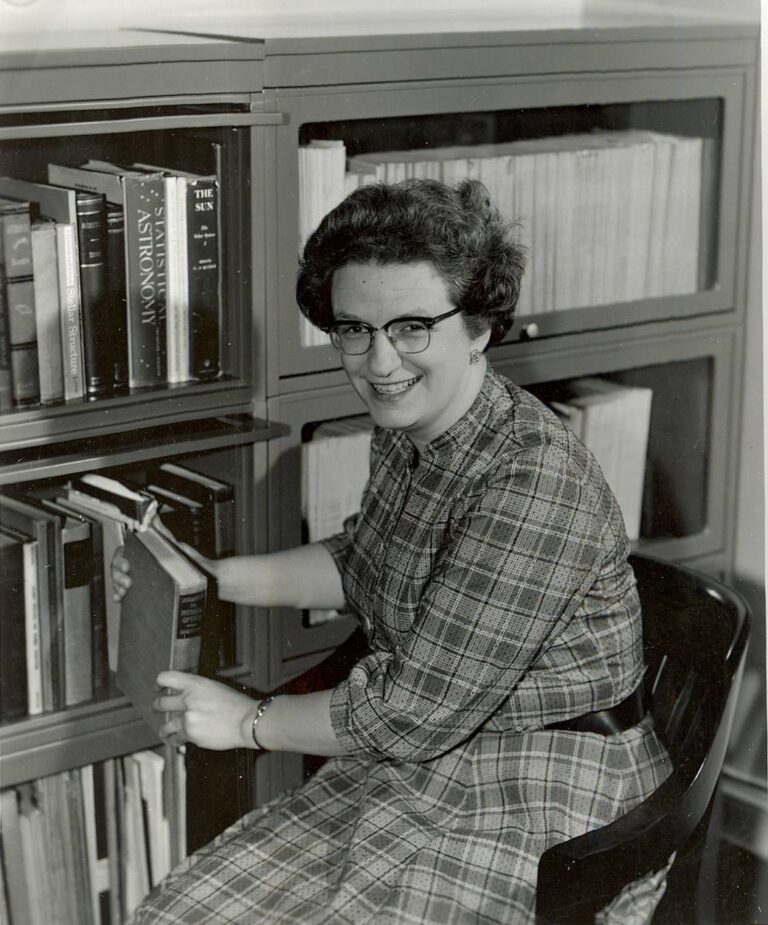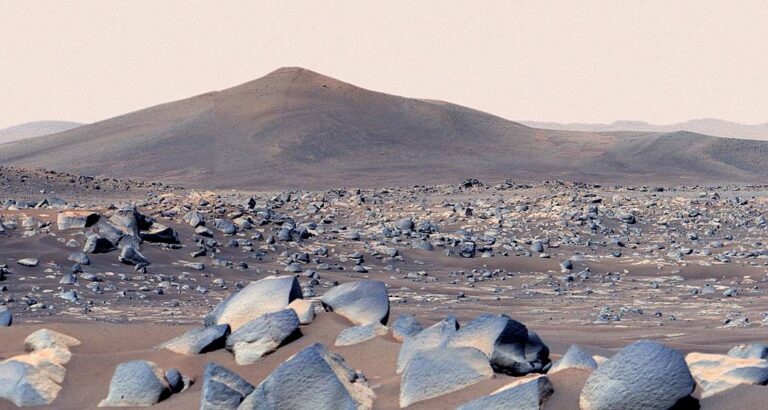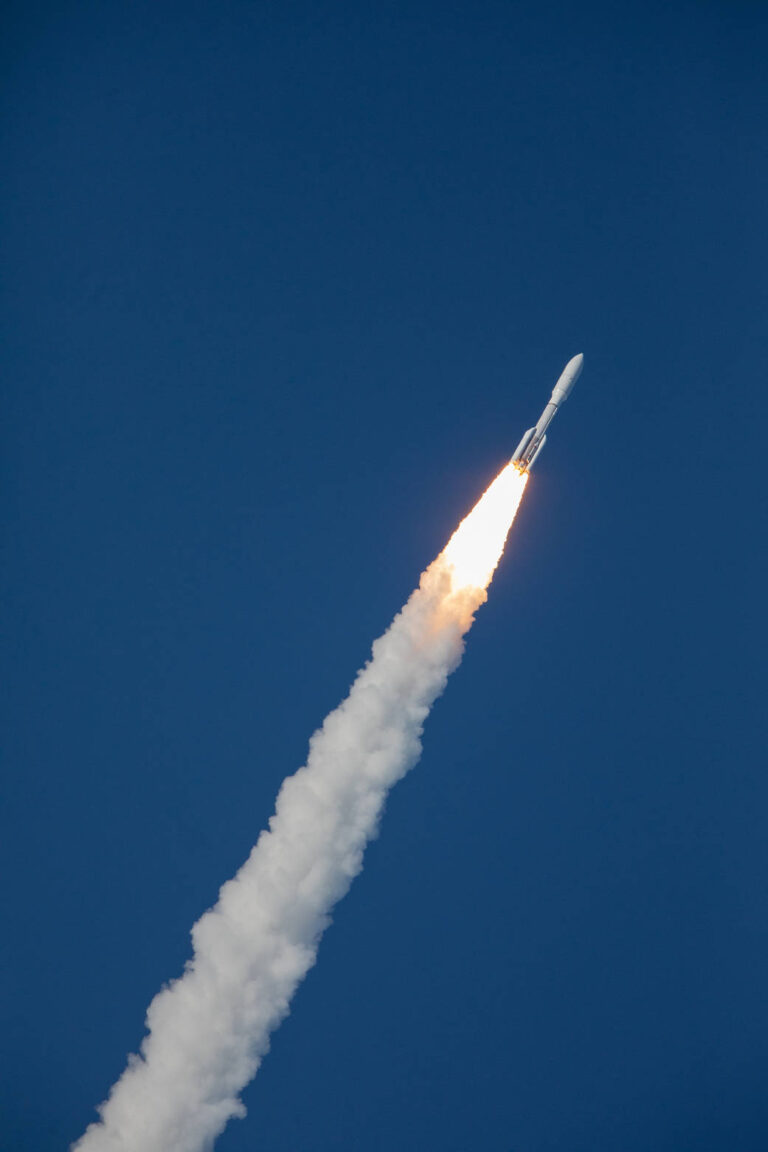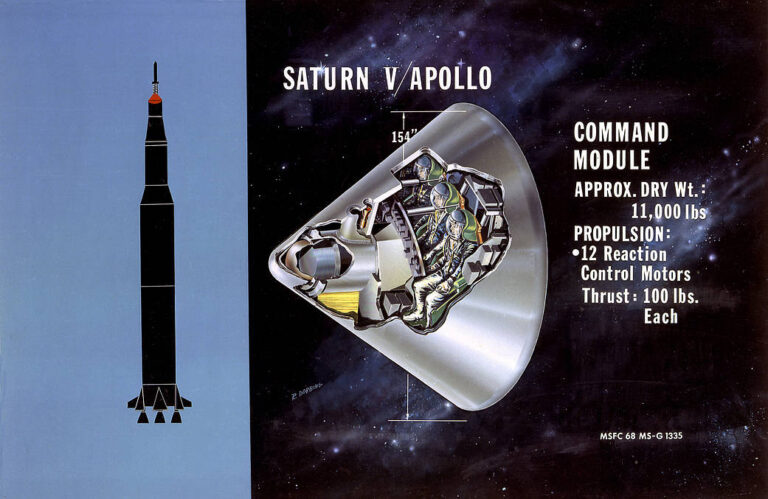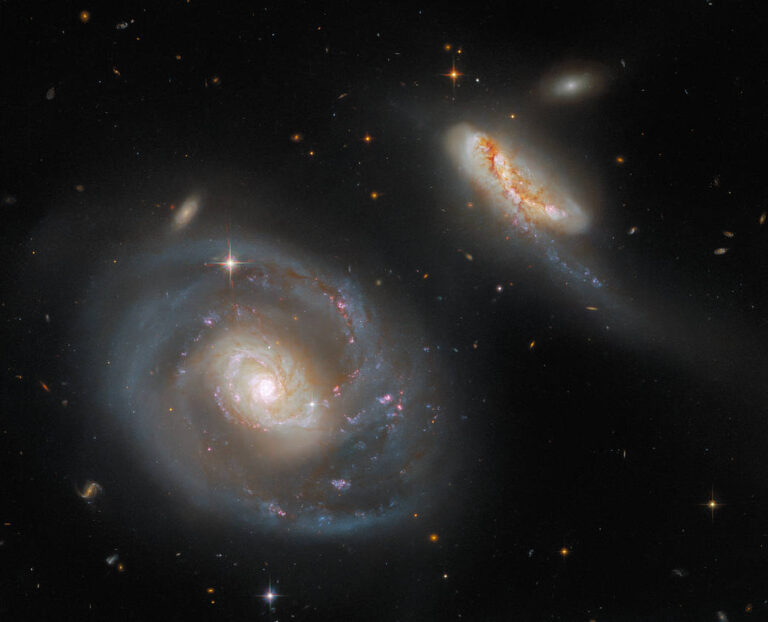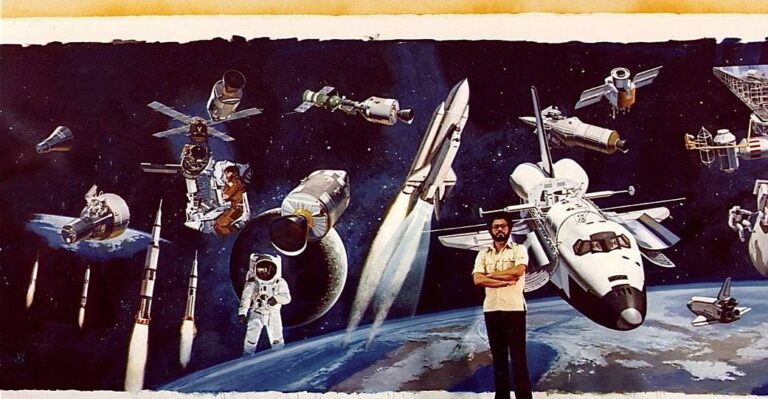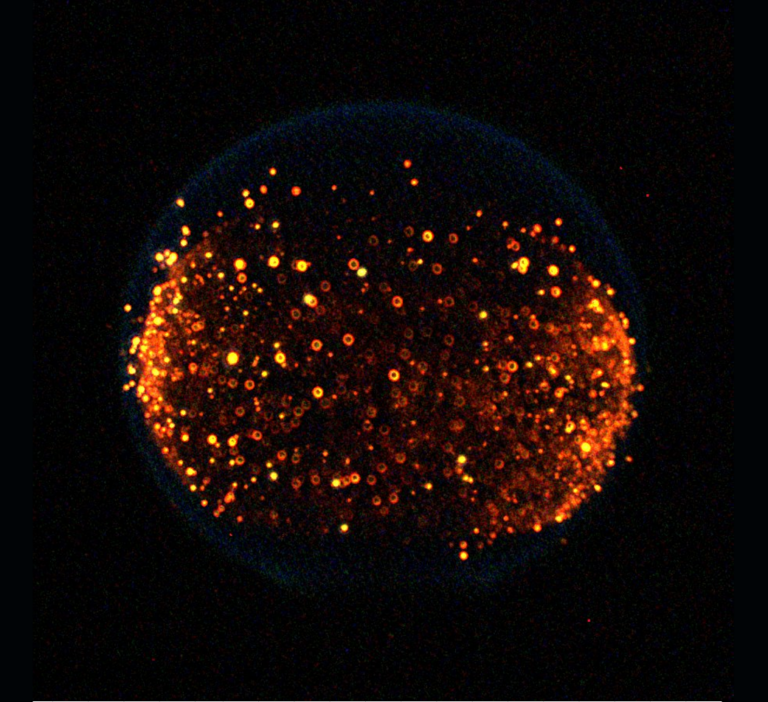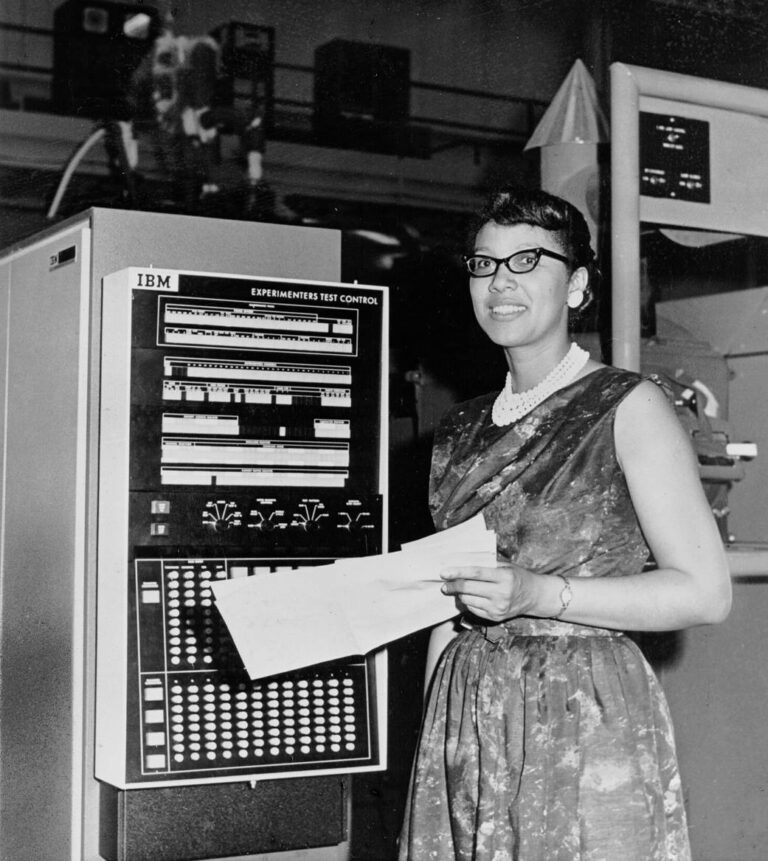南希·格雷斯·罗曼:第一任首席天文学家
In this undated image from the 1960s, Nancy Grace Roman sits in her office in NASA Headquarters. Roman was the first Chief of Astronomy at NASA’s Office of Space Science and the first woman to hold an executive position in the agency. In her role, she had oversight for the planning and development of programs including the Cosmic Background Explorer and the Hubble Space Telescope. Dr. Roman received her doctorate in astronomy from the University of Chicago in 1949 and joined NASA in 1959. She finished her NASA career at Goddard Space Flight Center where she served as the manager of the Astronomical Data Center. After retiring from NASA in 1979, she continued working as a contractor at Goddard. Throughout her career, Dr. Roman has…

